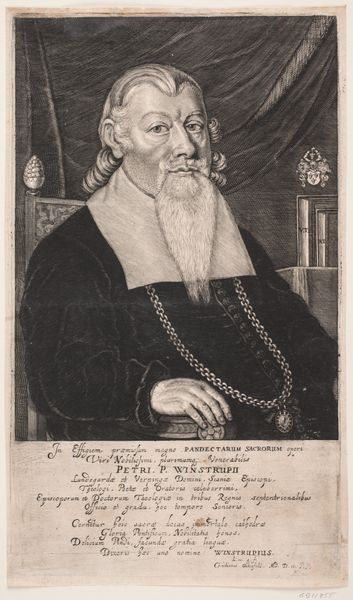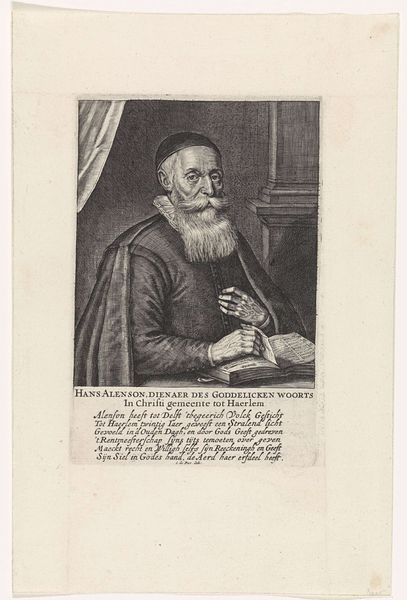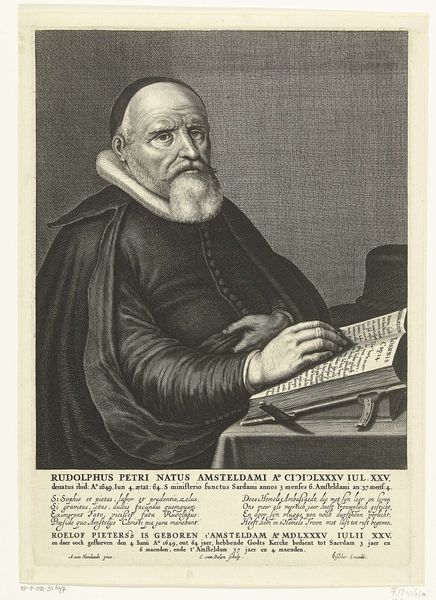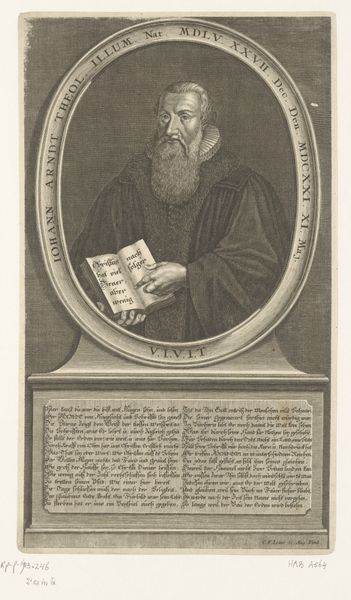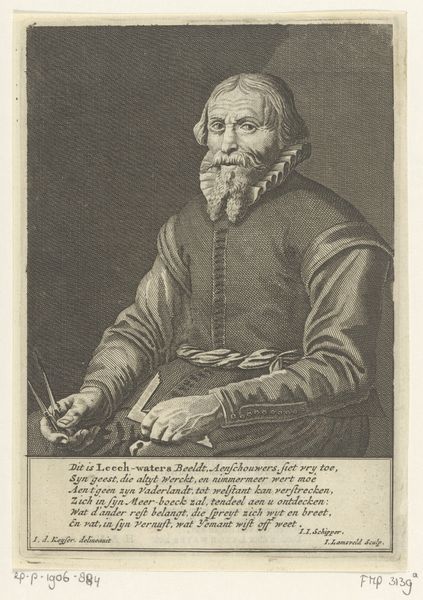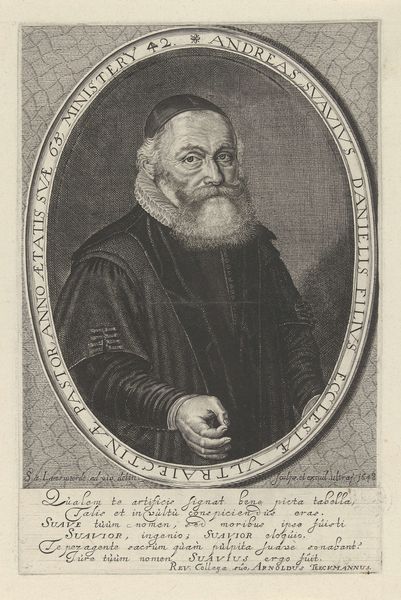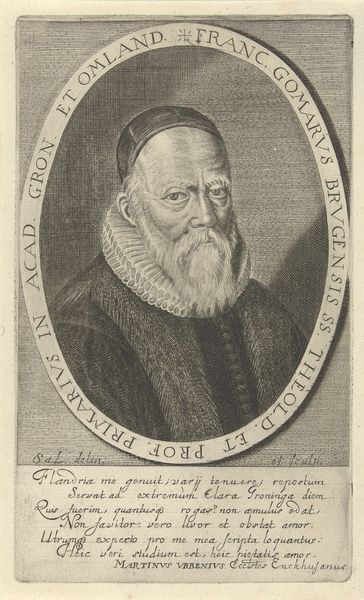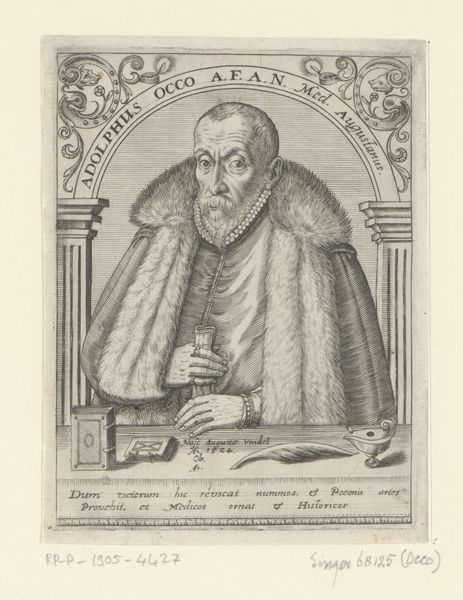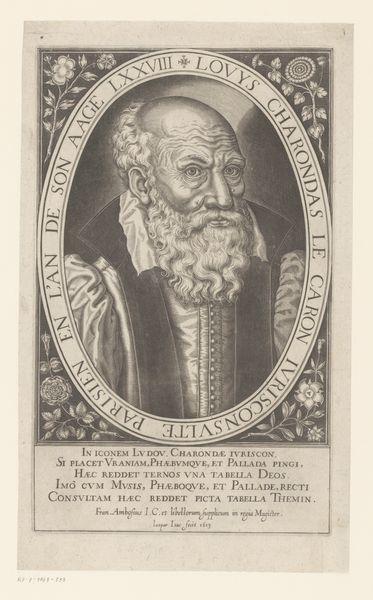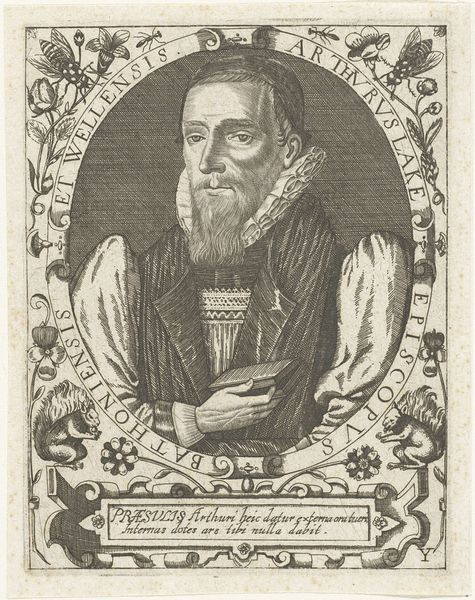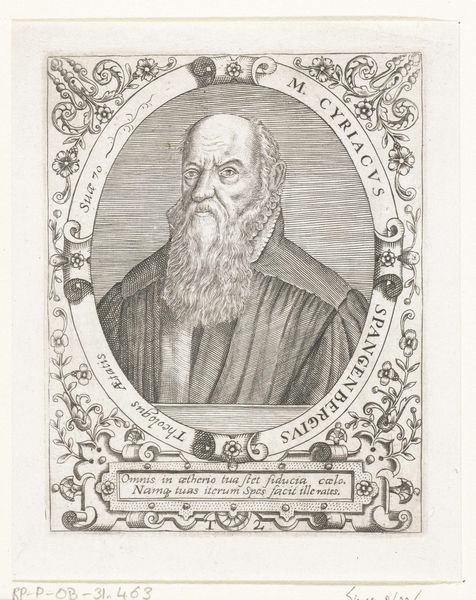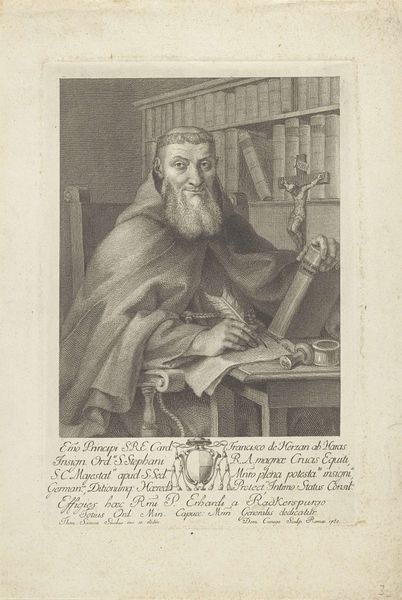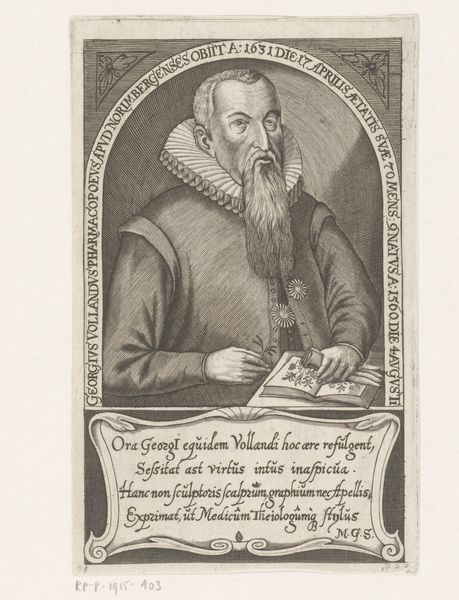
print, paper, engraving
#
portrait
#
baroque
# print
#
old engraving style
#
figuration
#
paper
#
portrait reference
#
line
#
history-painting
#
academic-art
#
engraving
Dimensions: height 181 mm, width 153 mm
Copyright: Rijks Museum: Open Domain
François van Bleyswijck created this engraving, "Portret van Nikolaus Drabik," sometime between the late 17th and early 18th centuries. A somber mood emanates from the portrait, achieved through the stark contrast of light and shadow, a formal quality that directs our eyes to the subject's face. Nikolaus Drabik is captured mid-action, quill in hand, seemingly interrupted from his writing. Note how the composition is divided; the subject is framed against a simple backdrop on the left, while dense text fills the right. This division is not merely aesthetic. Here we can see a clear tension between image and text, representation and interpretation. The use of Latin and the symbolic imagery—like the trumpet—hint at complex religious and intellectual underpinnings. Consider the formal arrangement as a discourse on representation itself. The detailed portrait captures Drabik's physical likeness, while the text aims to encapsulate his essence through language and religious symbolism. This interplay invites us to question how meaning is constructed and communicated.
Comments
No comments
Be the first to comment and join the conversation on the ultimate creative platform.
